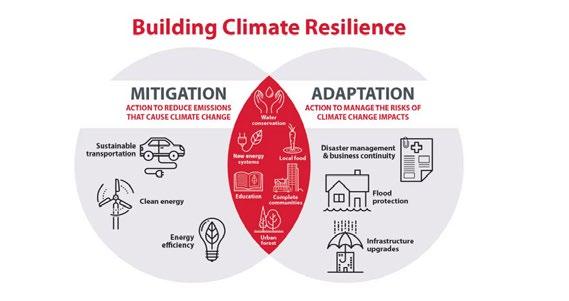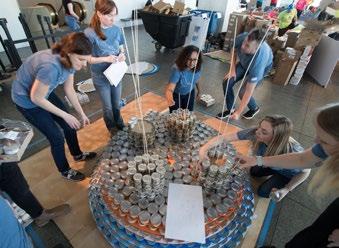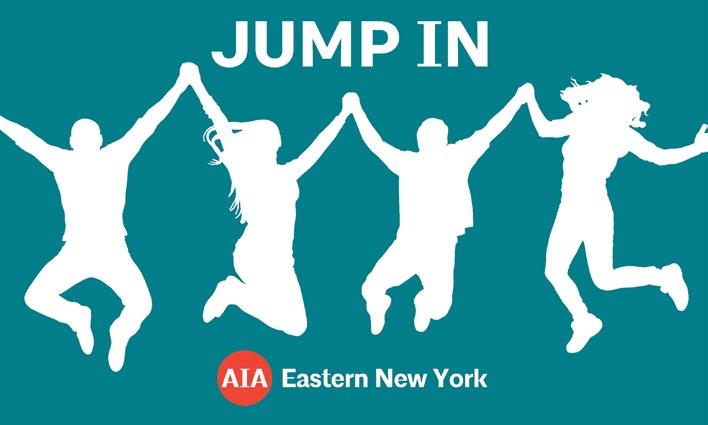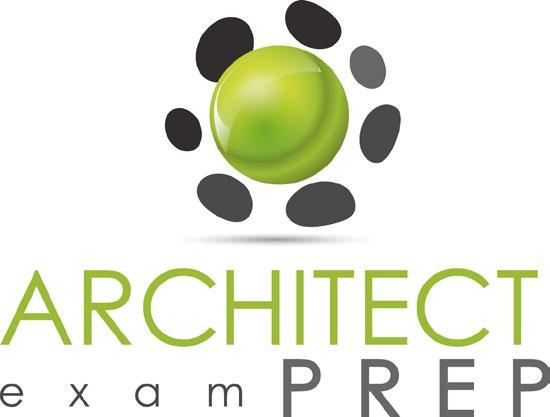
5 minute read
Grassroots 2021
ARCHI text Grassroots 2021: Bring It Home
by Andrew Petrazelli, AIA, 2021 AIAENY President-Elect Grassroots was a success for me, even in a virtual format during turbulent times. All of the lectures and events were easy to sign in to and went on seamlessly with the content flowing freely and plenty of time for Q & A sessions. One of the first events I attended was “Developing a Partnership Between Boards of Directors & Component Staff” presented by Bob Harris, CAE and Jana Itzen, AIA. This was quite eye opening to me—even in my third year of service at AIAENY. Of most importance were the definitions of roles, including the President and the Board versus the staff and Executive Vice President. It seems it is critical to keep the specific tasks of each role clear and to make sure correct delegation is occurring while always keeping the strategic plan in mind when making decisions. Keeping the topic of discussion and the level of details in-line with the type of meeting is crucial. Board meetings should always be the most-broad, while executive committee meetings, and finally specific committees and micro-volunteering task meetings being to most specific. Ethics should always be present and one should strive to achieve the following characteristics when in a leadership role including: accountability, transparency, integrity, innovation, diversity and be strategic in nature. It was also recommended to review the publication “The Speed of Trust” by Stephen Covey. Additionally, we discussed risk mitigation and the development and presentation of strategic plans. A strong and thoughtful plan is only the
first step, not only must it be implemented and continuously developed and annually reviewed, but it must also be advertised to the membership and tasks and milestones tracked to ensure a transparent and inclusive environment. We learned about the power of consent agendas and ways to ensure meetings stay on task and are always able to provide ample time and attention to true collaboration and innovation, not just being tied down to the agenda with procedural tasks. All of the discussions will prove helpful in the months and years ahead as we continue to strengthen the chapter. The small actions we take can help in providing accessibility and opportunities for others. What are items in your everyday tasks that could be slightly altered or shared with others in the chapter through events, town hall discussions, or committee involvement?
Another influential conversation, “Planning & Designing for Equitable Communities,” was focused on inclusive design and how innovative methods of managing projects throughout design and construction can produce a much stronger sense of community involvement and ownership. In order to remain effective, the project and fee structure are often increasingly unique and untraditional as there is a much broader timeline and many additional tasks that must be accounted for and implemented. Many of these include substantial R&D with both community stakeholders and local government to define and meet the needs of a community while maintaining cultural legacies and traditions. Nicole Hilton from Cole Hill presented a school athletic center known as the “Claw” and “The Front Porch @Sweet Auburn” development project.
Both projects presented alternative ways to provide economically feasible and community engaged projects which dealt with community growth, development, gentrification, sustaining local jobs and attracting “premiere employers” to communities. Then, Jamie Blosser, Executive Director of the Santa Fe Art Institute presented the Owe’neh Buringeh Preservation Project. This housing development on an indigenous community reservation was a successful 13year project which included development of a 64-acre site, from generic 1980’s cookie cutter federal reservation housing, to an inclusive design process being sensitive to local traditional building methods, massing and forms. Through a series of public meetings and an elder advisory committee, they were able to provide a project which was truly in tune to the needs and desires of this community, while also able to train and employ reservation members in the craft of historic and traditional building methods. A concluding discussion touched on existing recent developments of AIA chapters for instituting urban agenda grants and equitable frame work. Additional topics included the Anti-Displacement movements and a re-thinking of the traditional Pro-Bono framework to ensure value and appropriate time is allocated and the correct amount of designer, community involvement and ownership is inherently included in these often crucially influential and underfunded rushed community projects. Another outstanding webinar was “Staying Relevant—Mitigating the Effects of Climate Change” in which Kristen Dotson, Megan Feenstra Wall, Melissa Morancy and Ganesh Nayak discussed methods to ensure that projects progress towards zero carbon, equitable and resilient design. Primarily, we need to ensure these design techniques are accessible and relevant to every architect, every project and every project regardless of size, typology and aspiration. The best ways to achieve this are through mitigation to reduce emissions and adaptation to manage the risks of climate change. The most critical actions are




the ones that overlap these two fields and include water conservation, new energy systems, local food production, providing public education, self-sufficient communities and urban forests. They also presented existing frameworks and past education seminars which were held to assist architects with informing project design and clients to take these first steps. The framework defines each goal and then asks a series of questions, which can help to facilitate the project goals through specific design choices. Additionally, the topic of equity was also discussed, bring to light the challenge of making significant strides across all neighborhoods and income levels, currently there are significant disparities among ethnic communities and across the economic divides. It is important that we take these extra steps to educate our clients to understand the aspects of sustainability that are included in projects including the most simple and economic passive techniques, including micro-climates, site placement, window placement, operation and the like. This becomes increasing important as clients can often translate these theories to other aspects of their life including friends, family, other projects, small businesses, etc. Overall, the three examples above, are just a sample of the enriching conversations held at Grassroots this year. The topics discussed were enlightening, and it was refreshing to engage in articulate discussions with other passionate designers in this time of physical and social isolation. I ask anyone reading this to consider the critical aspects of the trade, and how we can all assist in lifting one another up to an equal playing field, where the goal of successful community driven projects are paramount. Over the coming months AIAENY is looking to strengthen many of the chapter committees and are looking for member engagement, no matter how small, to begin to implement some of these innovative and exciting ideas on a regional level.





